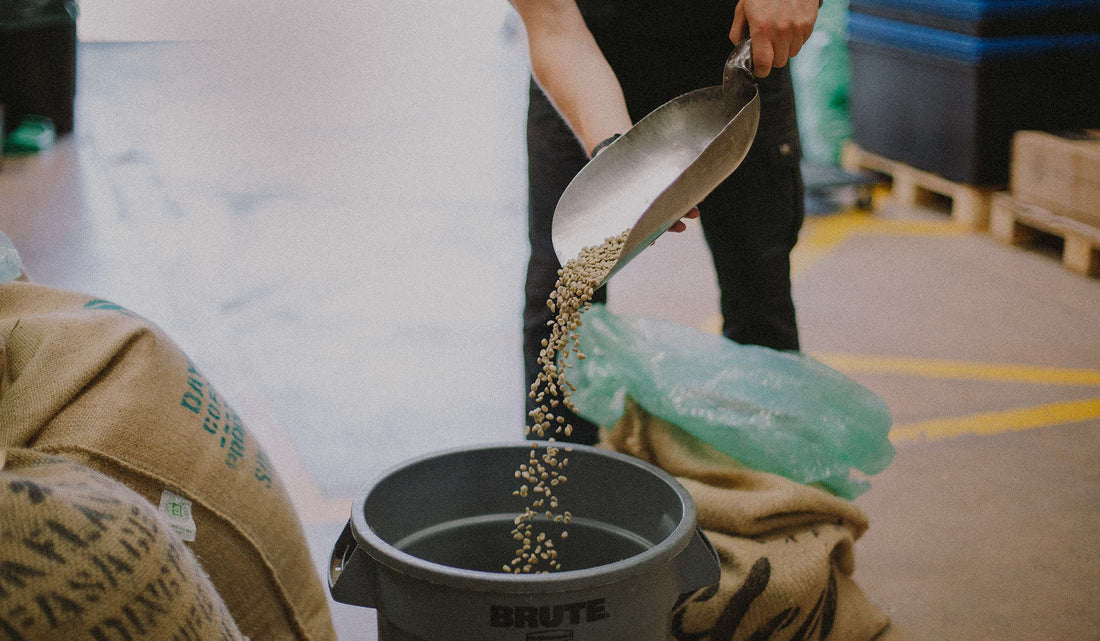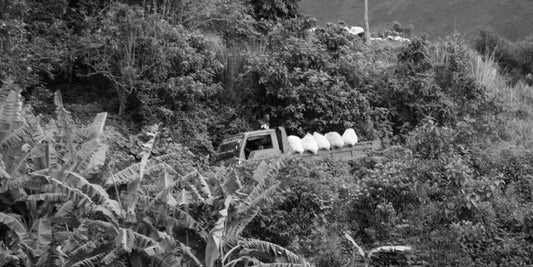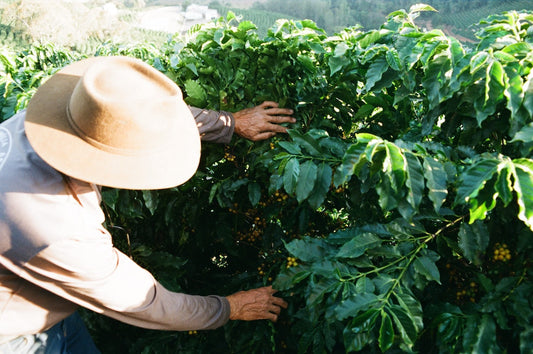
Around the World in Coffee Part 4: Ethiopia
We end this month of virtual travels, right where it all started – Ethiopia (we should qualify this by saying that coffee was likely found growing wild – in surrounding areas like Southern Sudan, before it was cultivated in Ethiopia). It might seem kind of backwards, but we thought we’d save the best until last! It’s a bit of a rookie error to be honest because we’re probably going to give ourselves an RSI writing this one last (especially after the previous three blogs we’ve just done). We’ve already got a thumb cramp and it’s only the first paragraph. Wish us luck.
Ethiopia is a crazy complex producing country, probably more so than any other. It has fascinated us ever since we got into coffee, not only because of its incredibly characterful coffees but also because of its history and importance in the evolution of the coffee industry. The more we learn about Ethiopia the less we feel we know. It’s almost impossible to condense anything meaningful into a blog post, but we’ll give it a go. Let’s start at the beginning.
The evolution of coffee is still mind-boggling to us – it was initially consumed as just the cherry, picked from the coffee tree. There are many apocryphal stories attached to the origin of coffee, our favourite being about an Ethiopian goat herder named Kaldi. The tale goes that he discovered coffee after his goats ate the cherries and he observed their sudden energetic behaviour. He later took the cherries to the monks at the monastery, who said they were the Devil’s work and tossed them into the fire. The monks realised the delicious aroma of the beans roasting in the fire and saved them. They crushed them to put out the embers, placed them in a jug and covered them in hot water to preserve the beans. Later, the monks drank the brew and it helped them keep awake during their nightly devotions. Over time, new ways of consuming this energy-boosting elixir were created. Pretty far fetched, eh?

Things are pretty different these days, beans certainly aren’t roasted in fires anymore (well, unless you’re Jimmy Docherty). The first records of exported coffee date back to the 1600s and it’s thought to coincide with when cafés started to appear around the Middle East and Yemen. Today, coffee is the main export – accounting for 70% of all export earnings and is 5th on the list of top coffee-producing countries.
Ethiopia has a rich, diverse topography – consisting of rugged mountains, flat-topped plateaus, deep gorges and river valleys. The climate is just as varied as the topography, with some areas (where coffee isn’t grown) even being semi-desert conditions, with other areas being temperate and tropical. Coffee is grown all over in a mixture of these settings, in four main regions; Sidamo, Yirgacheffe (a micro-region within Sidamo), Harrar, Ghimbi and Limu mostly situated in the bottom half of the country.
As if all the different regions weren’t enough to think about, they are then administratively split up into about 68+ different zones and further split into even more districts. To add to that absolute minefield, some districts are not part of a zone and instead are a Special District, functioning as an autonomous administrative division. Confused? So are we.
One of the most unique factors about Ethiopia is that most of the coffee it produces is genetically unidentified. This is not to be confused with “wild” coffee, but instead most commercially grown coffee trees in Ethiopia are regarded as “heirloom” varietals. What this means is that the trees haven’t been deliberately cultivated, and instead have been left to cross-pollinate and naturally evolve and mutate over time. This gives Ethiopian coffee its most unique flavour characteristic. More recently, some of the more developed farms have started mapping the genetic identity of their trees and some have started making specific cultivars.

Ethiopian coffees are known for their bright, floral, citrus notes, but the flavour profile does change from region to region. Unlike other countries that export almost all their coffee crop, Ethiopia exports less than half the coffee it produces and the rest is consumed within the country. Compare this to the 3% that is consumed in Kenya and 14% consumed in Colombia and you realise how integral coffee (and drinking coffee) is to Ethiopian culture.
You might have heard of the traditional ‘buna coffee ceremony’ which is common throughout Ethiopia. It can even be described as a cultural celebration and not just a ceremony. The beans are washed, roasted (like Jimmy, over an open fire), then brewed and served in a Jebena (a traditional clay pot). These rituals can be a couple of hours long and are highly social events – involving family, friends and neighbours.
Ethiopia is known for its tea-like washed coffees and fruity naturals, although we are slowly starting to see more honey and experimental processed coffees cropping up. Almost all are cultivated on small farms, with a handful of larger government and private-run estates. There are three production systems (not to be confused with processing methods); forest coffees, garden coffees and plantation coffees.
FOREST COFFEES
Are sort of what they say on the tin – found mostly in the wild forests of the southwest and southeast. These coffees grow wild under natural forest cover and need little maintenance, apart from clearing parts of the forest floor, to access the trees during harvesting.
GARDEN COFFEES
These are coffees that are planted around homesteads (essentially the gardens or outbuildings of farmers homes) by smallholder farmers. Typically within these settings, more management is needed such as pruning and fertilising. This method of production is perhaps the most common in Ethiopia.
PLANTATION COFFEES
Usually found few and far between, but these are large farms where coffee is grown intensively.

We should also talk a little bit about how coffee is traded in Ethiopia. The Ethiopia Commodity Exchange (ECX) was established in 2008 and all coffee is traded through this system today. It was the first commodity exchange to be introduced in Africa and revolutionised Ethiopia’s economy. Many African countries followed suit in implementing commodity exchanges after its success.
The ECX aims to protect both buyers and sellers in two fundamental ways. It protects sellers by ensuring they get paid promptly – before this measure was introduced, some farmers would have to wait weeks or months for the money to come through. All money exchanged is now paid upfront electronically. Buyers are also protected by ensuring they receive the quality of which they were promised and delivery times are much quicker.
We have two exceptional coffees from Ethiopia in our core range that are pretty different to one another. Our Guji Natural is bursting with notes of blueberry, apricot jam and florals and our Yirgacheffe has a soft acidity with notes of apricot, jasmine and a hint of Earl Grey accentuating the light, tea-like finish. They are both absolutely outstanding coffees in their own right.
Ethiopia is currently facing some difficulties with climate change in relation to coffee growing. Surface temperatures are increasing and coffee crops are becoming stressed due to the increased heat and subsequent lack of rainfall. That being said, work is already being done to help build a climate-resilient coffee economy for the future. The relocation of many farms could be a key role in building the future of many Ethiopian coffee farms.




